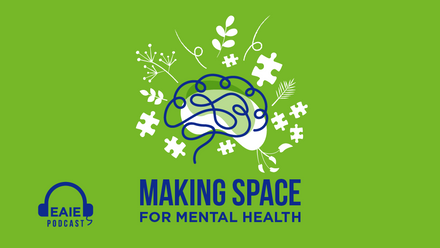Student engagement: the what, the why and the how

Over the last five years or so, a new discourse has emerged within many universities: the discourse of student engagement. It is becoming so embedded in policy and practice that student services departments might be more appropriately named, ‘Student Engagement Services’. Exactly what do we mean by student engagement, how does it manifest itself in policy and practice, and why is it so important?
Student engagement might be thought to be no more than another term for student involvement – and its antecedents certainly were grounded in a concern to increase involvement. Engagement also figures prominently in literature about ways to enhance the effectiveness of teaching and learning; in debates about effective student feedback mechanisms; and in promoting student representation within institutions. However, engagement is about more than simply finding ways to increase student participation in the life of the university. Engagement is not just about activity or doing. It is about the processes of internalising what the activity means and how it matters to you.
How does engagement show itself?
Student engagement is made up of three key elements:
- Behavioural engagement – generally indicated by behaviours defined by the institution as positive or constructive, such as turning up for lectures (and on time), complying with assignment deadlines, or getting involved with extra-curricular activities.
- Emotional engagement – this is revealed in positive attitudes such as showing genuine interest in what is happening, feeling a sense of belonging, or being really happy about life in the university.
- Cognitive engagement – this is about deep thinking and learning and manifests itself, for example, by students wanting to be challenged and being proactive in seeking such challenge. This might be shown by seeking additional conversations with tutors or other staff to explore topics or activities further.
Students may be positively engaged on any combination of these dimensions at any one time or over a certain period. Equally, we have to recognise that students might be negatively engaged in all or any of these dimensions. And, they might be disengaged behaviourally, emotionally, and/or cognitively at various points in their university life. As you can see in the table below, some authors prefer the term ‘non-engagement’ rather than ‘disengagement’ because the latter implies a conscious decision when, in many instances, it is more a case of inertia.
Below is a summary of ways in which these dimensions of engagement might manifest themselves in relation to the academic experience.
| Positive engagement | Non-engagement | Negative engagement | |
|---|---|---|---|
| Behavioural | Attends lectures, participates with enthusiasm | Skips lectures with no excuse | Boycotts, pickets or disrupts lectures |
| Emotional | Interest | Boredom | Rejection |
| Cognitive | Meets or exceeds assignment requirements | Assignments late, rushed or absent | Redefines parameters for assignments |
Is engagement just about academic success?
Well, yes engagement is about academic success… in the final analysis. Along the way, however, engagement brings other benefits too.
We know that positive engagement with the many opportunities for personal and social development (not just intellectual or academic development) which universities offer today, contributes significantly to student retention and ultimately student academic success. For example, studies into first year student retention have shown that not only do obvious factors, such as students’ academic preparedness for their chosen course, play a key role, but also less immediately obvious ones like the students’ degree of social integration (sense of belonging) and the development of a strong learner identity, play an important role too. These less obvious key factors in academic success are explicitly developed within strategies for student engagement.
How do student services help to develop positive engagement?
Since universities have started to recognise the link between engagement and student success, they have been moving from a traditional conceptualisation of student services from being about ‘support’ to one which facilitates engagement. In making this shift, universities have had to recognise that by its very nature, (behavioural, emotional, and cognitive) widespread positive student engagement can only be delivered by a partnership between academic, social, and service provision, and with students themselves. This partnership approach requires, in turn, the following key developments:
- Strengthened management co-ordination across traditional institutional boundaries
- New ways of working with students (including with student organisations) and academic staff
- Developing staff capacity and skills to understand how positive engagement works and can be supported
What does all this mean for student services, policy and practice?
A student engagement strategy will focus on developing ways to promote student integration into the life of the university and to internalise and give meaning to those experiences. Opportunities which can assist in promoting a sense of belonging and helping to develop powerful learner identities, for example, might include, inter alias:
- Peer-to-peer mentoring
- Buddy systems
- Volunteering schemes both within and outside the university
- Student ambassador schemes
- Development of social networks
- Students-as-researchers initiatives
- Enhanced student representation on all committees, working groups, etc
- Enhanced role for formal student organisations
While these initiatives apply to all students, it is important that they are tailored to the specific situations of different groups or categories of students.
With the majority of our higher education institutions facing increased financial challenges; greater global competition for students; more and more pressure to retain students and to increase success rates, developing student engagement strategies should be one of the very highest priorities for those leading our universities.
By Stuart Billingham, Professor Emeritus of Lifelong Learning, UK






